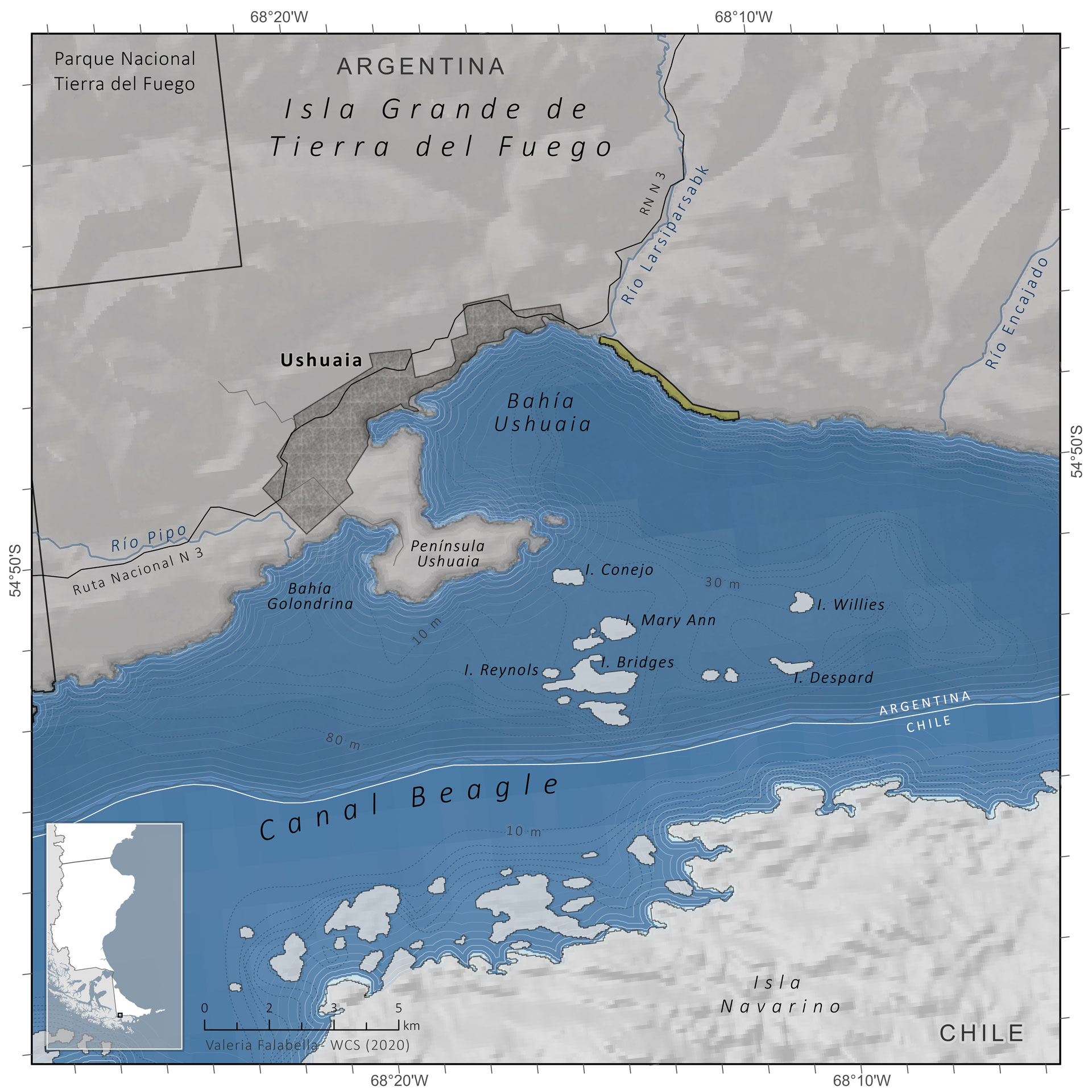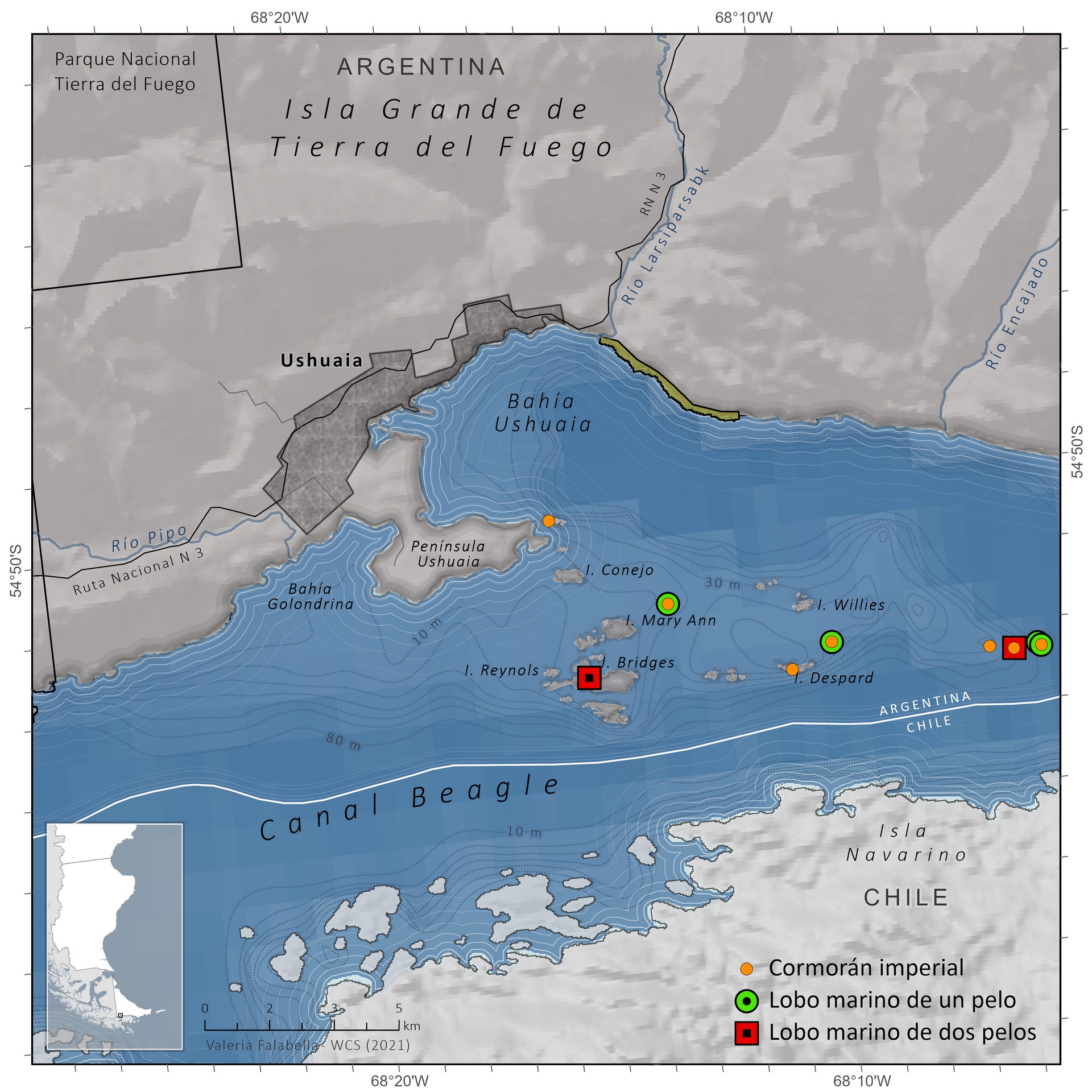Cover Photo © Guillermo Harris
Description
The Playa Larga protected area was established in 1997. It is located east of the city of Ushuaia and includes a coastal strip that includes part of Playa Chica and all of Playa Larga. The sector corresponds to the southern slopes of the Sierras de Sorondo, with discontinuous slopes modeled by glacial action. Within the reserve there is an evergreen forest sector, where the dominant species is the Magellanic coihue (Nothofagus betuloides) associated with the canelo (Drymis winterii) and the notro (Embotrium coccinemum) and herbaceous vegetation near the coastline. Among the fauna, coastal and marine birds stand out. Sightings of the Andean condor (Vultur gryphus) are common in the area. According to the studies carried out, the portion of the coast between the mouth of the Olivia and Remolino rivers is the only preserved sector of Yamana occupation. Among the archaeological remains found in the region, the concheros, mounds formed by the accumulation of mollusk shells from their consumption, stand out. These are extremely fragile sites, exposed to destruction due to lack of knowledge and must be preserved.
Geographic Location
Province
Tierra del Fuego
Coordinates
-54.80° Latitude S
-68.22° Longitude W
Size and Limits
Total Area:
Marine Area:
Continental Area:
NOTES ON SURFACE ESTIMATION
Area estimated based on the calculation of the area of the polygon represented on the map (ArcGIS PRO) with an Albers Equivalent Conic projection to preserve area calculations.
APN reports 0.24 km2 (Read More)
Legal Aspects
Jurisdiction
Provincial
Year of Creation
1997
Creation Legislation
Provincial Law No. 384
Eco-regions represented
Marine
–
Land
Patagonian Forrests Ecoregion
Conservation Objectives
Purpose: safeguard, and pretect archaeological sites discovered and to be discovered, since they constitute the Cultural Heritage of the province, and therefore a source of information about habits and customs of human settlements on the Beagle Channel coasts.
Within the reserve there is a sector of evergreen forests, where the dominant species is the Magellan Beech (Nothofagus betuloides) associated to the Canelo or Winter’s Bark (Drymis winterii), the Chilean Firetree (Embotrium coccinemum), and herbacious vegetation on the coastline.
Among the fauna, coastal and marine birds are the most important. Sightings of the Andean Condor (Vultur gryphus) are frequent in the area.
Management
Management effectiveness and evaluation year
51 % – METT Evaluation (2014)
Sources consulted:
Creation Law No. 384 (1997)
Padín (2007)
Bird and marine mammal colonies: See Bibliography



